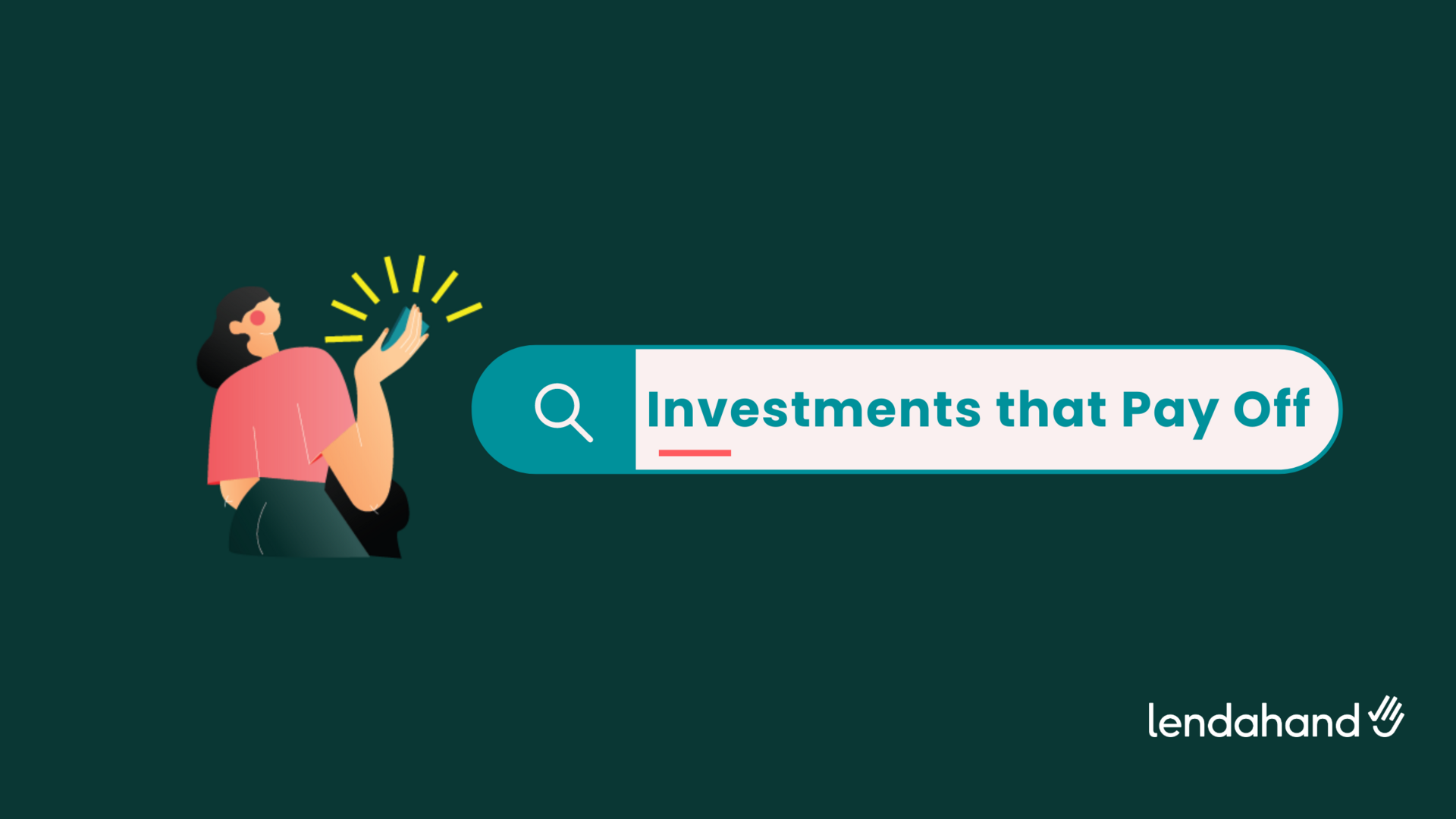
Why Investing in Financial Institutions is Paying Off

Written by Daniël van Maanen on 8 August 2024
The historical return on investments in Financial Institutions on Lendahand is now 3.9% per year (and rising!).
The crowd of investors on Lendahand has been fighting poverty since 2013 by investing in people and their businesses. Our crowdfunding platform opens up access to financing, allowing entrepreneurs worldwide to get the growth opportunities they need and deserve.
We balance risk, financial return, and impact every single day. What lessons on those three topics have we learned over the past ten years?
What can you invest in on Lendahand?
It all started with crowdfunding projects for loans to Financial Institutions in emerging markets, mostly local Microfinance Institutions (MFIs). Later on, we added direct investments in impactful companies to our portfolio to amplify our impact in different sectors. Today, we differentiate the types of investments between Financial Institutions that offer microfinancing to small entrepreneurs and growth financing to SMEs, and direct investments for Medium-Sized Businesses. To mitigate the risks of defaults, all portfolio companies have a minimum credit score of B on a scale from A+ to E.
Why do we reach entrepreneurs through local Financial Institutions instead of directly?
The reason we choose this route is simple: to find, assess, and closely interact with entrepreneurs in global emerging markets from our Rotterdam office with a small team is close to impossible.
Micro-entrepreneurs only need to borrow a very small amount (say EUR 500), and SME entrepreneurs borrow fairly small amounts for their economic activities (around EUR 25,000 on average).
Luckily, there are experienced local Financial Institutions which have worked hard to build up (large) pools of customers in the regions they operate in. These Financial Institutions are intermediaries who also need to borrow money to lend it to their customers. But unlike large banks, they might not be able to borrow on the capital markets or from large local investors. They often depend on international impact investors like Lendahand—or better: like you, the Lendahand crowd.
Over the past 11 years, we have introduced the Financial Institutions we work with and shared the stories of their customers with you. Since 2021, we have been measuring and visualising the impact and differences created through the annual impact report.
What we haven’t been so vocal about is the financial return on investments of the loans to our Financial Institutions and how those returns may have changed over time. It's time to have a look!
How is Investing in Financial Institutions Paying Off?
Calculating Interest Rates
Before we dive into the numbers, first a bit of theory.
What determines the interest rate on a loan? Simply put: i) the total interest rate that Lendahand agrees with the financial intermediary and ii) the split between Lendahand and the crowd investors.
The total interest charged to the Financial Institution depends on multiple factors, but roughly we could say it is a combination of:
- The risk of the institution encountering problems in repaying their loans (with higher risk resulting in a higher interest rate)
- The maturity of the loan (with a longer maturity usually resulting in a higher interest rate)
- The availability and price of other funding sources (Does the institution have other local or international lenders? Do they take saving deposits from their customers?)
- Negotiations (this is related to the previous point: when Lendahand is the first or sole lender, it has stronger bargaining power compared to a situation whereby a Financial Institution has multiple other sources of funding)
With respect to the split between Lendahand and the crowd, there is no fixed formula. But we use the following rules of thumb:
- At least 60% of the total interest should go to the crowd
- Currently, the interest for the crowd should be at least 5% per year
- Lendahand should make at least 3% per year
Return Accuracy
Does the return on an investment equal the published interest rate? If all goes to plan “yes”, however, the actual return is affected by some important factors:
- If the financial intermediary is not able to pay a part of the notional amount and/or interest, then the return will be lower (and potentially negative)
- If the financial intermediary is paying later than promised, then the return percentage per year might be lower (unless the financial intermediary pays additional interest)
- If the investment is in USD, then there are USD to EUR conversion costs (0.3%) and, more importantly, the return in EUR depends on the exchange rate at the time of repayment compared to the exchange rate at the time of investment. If the USD is weaker at the time of repayment, the return in EUR will be lower than the interest amount published.
In short, the return on each loan depends on the repayment discipline of the financial intermediary and on the exchange rate in case of USD investments .
In addition, the return on a pool of loans/investments depends on the composition of the investor’s portfolio. Which will be different for each Lendahand investor.
How big is the fish?
Let’s break it down: How much did Lendahand investors make by lending to Financial Institutions? Well, we can’t say that everyone made the same return, as all investors choose different loans to invest in. That is the beauty of crowdfunding 😉
But, we can say something about the scenario in which you would have invested 100 euros in each loan to FIs ever offered on the Lendahand platform. In the table below, the two final columns show the return accuracy:
i) Average Interest Rate: Shows the upfront offered average interest rate, before knowing the repayment discipline and the exchange rate fluctuations;
ii) Actual returns: Shows what has been returned and includes an estimation of the value for the loans still outstanding today.
| Year | Number of Active FIs | Number of projects | Average Project Size | Average Interest Rate (p/a) | Actual/Estimated Return (p/a) |
|---|---|---|---|---|---|
| 2013 | 1 | 22 | EUR 2.2k | 3.0% | 3.4% |
| 2014 | 2 | 114 | EUR 5.9k | 3.1% | 3.7% |
| 2015 | 5 | 365 | EUR 8.5k | 3.4% | 3.4% |
| 2016 | 10 | 899 | EUR 8.5k | 3.5% | 1.9% |
| 2017 | 14 | 556 | EUR 12.5k | 3.7% | 2.8% |
| 2018 | 12 | 331 | EUR 25.4k | 3.8% | 3.2% |
| 2019 | 10 | 310 | EUR 39.1k | 3.8% | 2.8% |
| 2020 | 9 | 107 | EUR 65.4k | 4.6% | 1.6% |
| 2021 | 11 | 60 | EUR 214.8k | 5.0% | 6.4% |
| 2022 | 13 | 59 | EUR 224.2k | 5.3% | 3.7% |
| 2023 | 21 | 67 | EUR 194.4k | 5.8% | 5.2% |
| 2024 (Jan-June) | 17 | 54 | EUR 145.6k | 6.5% | 6.5% |
| Overall | 46 | 2944 | EUR 31.6k | 3.9% | 3.9% |
What do these data tell us? A few things:
- If one had invested in all Financial Institution (FI) loans from the beginning (2013) the overall net return in EUR would have been 3.9% per year.
- The average interest rate offered has increased significantly over the years, from below 4% prior to 2020 to 6.5% in the first half of 2024. This is a result of:
- Global interest rate increases (from negative to ~3% in EUR and 5% in USD)
- Introduction of USD loans (with typically higher interest rates
- Stronger bargaining power of Lendahand over time
- From 2016 - 2020, the realized return was lower than the average interest rate offered. This is due to non- or late repayments by a number of Financial Institutions. In particular, prime COVID year 2020 hurt the performance, albeit still a net positive return of 1.6%.
- The number of active Financial Institutions has increased since 2020 when the performance of direct SME loans started to deteriorate and we renewed our focus on onboarding Financial Institutions. The introduction of USD loans also helped in the origination of new FIs in our portfolio.
- In 2021 the net return in EUR was higher than the average interest rate offered due to the appreciation of the USD vs EUR.
- For the year cohorts 2022 and 2023 the realized/expected return in EUR is lower than the published interest rate due to the depreciation of USD versus EUR in that period.
Performance Breakdown: What about defaults and arrears?
Lendahand’s track record in investing in Financial Institutions is excellent!
From the 46 Financial Institutions that we have onboarded since 2013:
- 14 have fully repaid all their loans
- 24 are still repaying and are all on-time
- 4 are in arrears. We are still recovering (small) amounts from each of these four institutions. The total current outstanding amount at risk is EUR 437K, from the EUR 13.5m borrowed by these 4 FIs. That is 3.2% at risk.
- 2 FIs were partially written-off (6% of total amount borrowed by these two FIs)
- The total write-off for FIs up until June 30, 2024, was EUR 262K, out of EUR 92.1M lent since 2013. That is a write-off ratio of 0.3% (or, put differently, a repayment ratio of 99.7%!)
Since August 2021 no new arrear cases have emerged for Financial Institutions. You can have a look at our up-to-date Portfolio Overview Dashboard here.
We hope to have shown that lending to global Financial Institutions through the Lendahand platform is not only fun & impactful, but has also yielded an attractive net financial return over the years! To read more about the various Financial Institutions we work with globally, read this blogpost.
